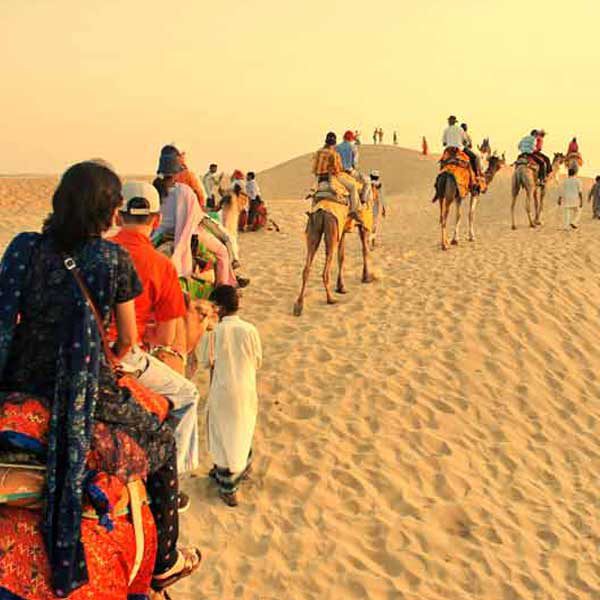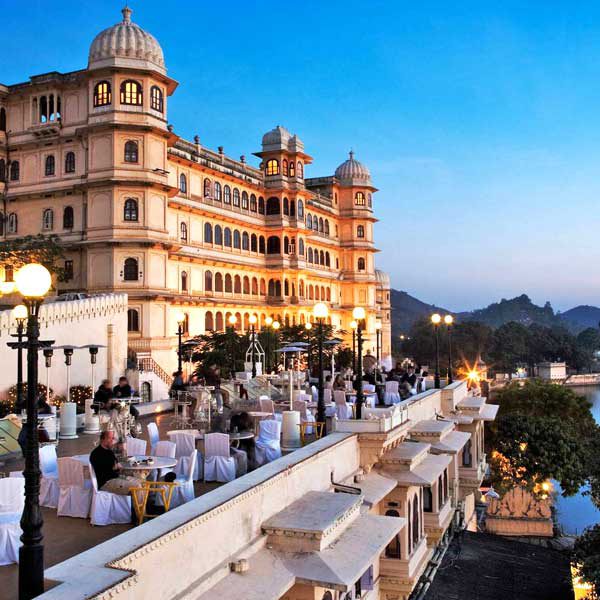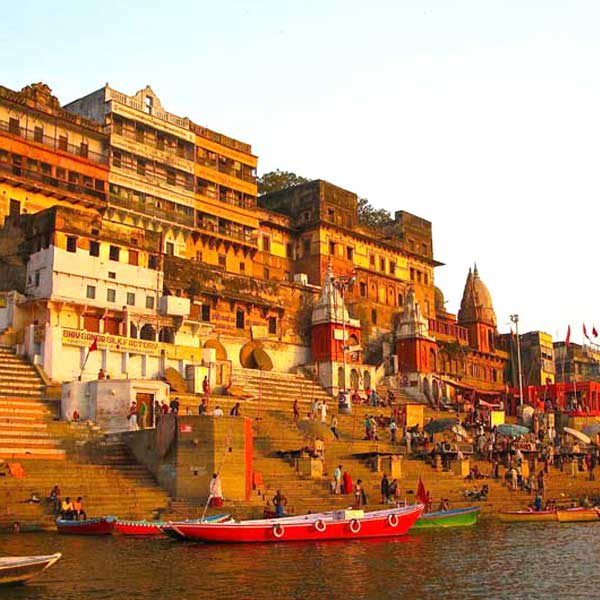Description
Day 01:Arrive in Delhi
Delhi, the capital city, unwinds a picture rich with culture, architecture and human diversity, deep in history, monuments, museums, galleries and gardens. It is comprised of two contrasting yet harmonious parts, the Old Delhi and New Delhi. Old Delhi takes you through the labyrinthine streets passing through formidable mosques and forts. The imperial city of New Delhi displays the finely curved architecture of British Raj.
Late evening arrive in Delhi. On arrival, you will be welcomed by our staff and transferred to your hotel in Delhi.
Day 02: Delhi
In the morning have sightseeing tour of Old & New Delhi.
In Old Delhi, drive past Red fort, built in Red Sand stone this imposing fort is 3 Kms in perimeter with the height of the wall varying from 18 to 30 meters at places.
Visit Jama Masjid, one of the largest mosques in India where more than 20.000 people can kneel in prayer. Completed in 1658 this Mosque has three gateways, four angle towers and two 40 m high minarets.
Visit Raj Ghat on the banks of the river Yamuna, Mahatma Gandhi’s Memorial, where he was cremated following his assassination in January 1948.
In New Delhi, visit Lakshmi Narayan Temple – This temple was build by G. D. Birla in 1938. The temple is dedicated to the goddess of prosperity and good fortune.
Drive past Janpath, Rashtrapati Bhawan, Parliament, Government Buildings and India Gate. India Gate was built as a memorial to commemorate the 70,000 Indian soldiers killed in the First World War.
Also visit Qutab Minar, ornamented by bands of inscriptions and by four projecting balconies supported by elaborately decorated brackets. It is 238 feet in height, 47 feet at the base and tapers to nine feet at the apex
Overnight in the hotel.
Day 03: Delhi / Agra
In the morning drive to Agra. Upon arrival check in the hotel. Afternoon visit the Taj Mahal (1631-1653 & Closed on Fridays), a poem in white marble, built by Shah Jahan in memory of his beloved wife, Mumtaj Mahal.
It took twenty-two years and hard toil of more than twenty thousand workers to construct Taj Mahal. The beauty of the Taj Mahal is enchanting and it reflects the marvelous beauty of architecture and richness of art of the Mughal period.
Also visit Agra Fort, built alongside the Yamuna River stretching almost 2.5 km. The fort’s colossal double walls rise 20 m in height and surrounded by a moat. The lofty battlements of the Agra fort cast its protective shadow over the far stretching mansions of nobles and princes built along the riverfront.
Overnight in Hotel.
Day 04: Agra – Jaipur
In the morning, drive to Jaipur. On the way visit Fatehpur Sikiri.
Fatehpur Sikri is a beautiful and deserted medieval city built by Akbar the Great in the 16th century to serve as the capital of his vast empire. The Mughals later abandoned this city for lack of water. Fatehpur Sikri had a short life of splendor. Once Akbar left it in 1585, it never regained its lost importance and has remained the well-preserved ghost city of India.
Later proceed to Jaipur. Upon arrival check in the hotel. Overnight in Hotel.
Day 05: Jaipur
After breakfast, have excursion trip to Amber Fort with Jeep / elephant ride.
Amber Fort is situated on the crest of a hill seven miles north of Jaipur is Amber, capital of the Kuchwaha Rajputs from 1037 to 1728. Man Singh I built it in a style to rival Mughal grandeur and opulence. The city-palace is protected by towering outer walls, a further wall runs for miles along the hills surrounding the palace.
In the afternoon have sightseeing tour of Jaipur.
Make a photo stop at the Palace of Winds (Hawa Mahal). Hawa Mahal is a sample of the perfection of the architecture.
You will visit City Palace, a combination of conventional Rajasthani and Mughal architecture. City Palace is a huge complex, which houses many courtyards, gardens and buildings. The city palace houses the Chandra Mahal, Shri Govind Dev Temple and the city palace museum.
Also visit Jantar Mantar, built between 1716. It is located within the city palace. Jantar Mantar contains a collection of instruments for observing the movements of sun, moon, planets and stars. It was built to develop the interest of the people in Astronomy.
Later return back to Hotel for Overnight.
Day 06: Jaipur – Udaipur
In the morning, drive to lake city of Rajasthan – Udaipur.
Udaipur, known as the Venice of the east, is the centre for performing arts, craft and its famed miniature paintings. The medieval attractions of the city are its chief draw, but the scenic beauty of Udaipur and its surroundings is also a major attraction for the tourists.
On arrival in Udaipur, check in at the hotel. Rest the day is free at leisure.
Overnight in the hotel.
Day 07: Jaipur – Udaipur
After breakfast visit the City Palace towering over the Pichola Lake. Maharana Uday Singh initiated in the construction of the palace but succeeding Maharanas added several palaces and structures to the complex retained a surprising uniformity to the design.
Visit the Jagdish Temple; built by Maharana Jagat Singh I in 1651, the temple enshrines a black stone image of Lard Vishnu. The exterior and the plinth are covered with base relief of alligators; elephants, horsemen and celestial musicians rise in tiers.
Also visit Sahelion-ki Bari, ornamental pleasure garden specially made for the ladies of the palace in the 18th century. It has beautiful fountains, trees and flowers.
In the evening enjoy boat ride on the Lake Pichola. This picturesque lake encloses the Jag Niwas Island and the Jag Mandir and the City Palace extends along its eastern banks.
Return back to hotel for Overnight.
Day 08: Udaipur – Ranakpur – Jodhpur
In the morning, drive to Jodhpur. Jodhpur is the second largest city of the state of Rajasthan, was the capital of the Marwar state of Rajasthan.
On the way visit Ranakpur, Ranakpur has 03 temples of the Jain sect dating back to the 14th/15th century.The main grand temple complex dedicated to the Jain Thirthankara Adinatha – the Chaumukh temple with 29 halls with 1444 pillars no two of which are alike. This marble temple dates back to mid fifteenth century. It took 65 years to complete and it is one of the five holy Jain pilgrimage centres in the world.
Two temples, dedicated to saints- Parasvanath and Neminath face the main temple. The temples have beautiful carvings similar to that of Khajuraho. Another temple worth visiting is the nearby Sun Temple, a 8th century A.D. temple dedicated to the Sun god.
On arrival in Jodhpur, check in at the hotel. Rest the day is free at leisure.
Overnight in the hotel.
Day 09: Jodhpur – Jaisalmer
In the morning, visit the impressive Mehrangarh Fort on a 37 m low sandstone hill built by Rao Jodha in 1459. From the top of the fort one can get a bird’s eye view of the old city. You will notice the predominance of blue houses referred to as Brahmin houses – the colour being associated with the high caste.
Nearby, visit Jaswant Thada, an imposing marble cenotaph built in 1899 for Maharajah Jaswant Singh II, and smaller memorials to other Maharajahs of Jodhpur.
Later drive for Jaisalmer. Jaisalmer induces a dramatic picture of utter magic and brilliance of the desert. One of the main draws is the daunting 12th century Jaisalmer Fort and beautiful havelis which were built by wealthy merchants of Jaisalmer are yet another interesting aspect of the you can let your eyes caress the sloppy sand dunes while you ramble your way in a camel safari. Bhatti Rajput ruler Rawal Jaisal, after whom the city finds its name, founded Jaisalmer in 1156.
On arrival in Jaisalmer, check in at the hotel.
Overnight in the hotel.
Day 10: Jaisalmer
In the morning visit Jaisalmer Fort. Built over the Trikuta hill, fort is the biggest and the most beautiful landmark of the city. It is occupied by shops, stalls, and a number of other business concerns. It is also known as SONAR QUILA or the Golden fort, rising from the sand, the mega structure merges with the golden hues of the desert ambience.
The Jain temple, situated inside the fort, made between 12th and 15th century, bears testimony to Rajasthan unique artistry.
Visit the Havelis; the mansions built by the wealthy merchants, which are still in very good condition. The intricate craftsmanship is beyond parallel. The Havelis like the Patwon-ki-Haveli and Salim-Singh-ki-Haveli are remarkable for their exclusive cutwork, yellow and red stone treatment and the bracket-shaped decoration of peacocks.
Bada Bagh, was commissioned by Maharawal Jait Singh in the early 16th century and completed by his son Lunakaran after his death.
Late afternoon drive to Sam Sand Dunes; situated at the edge of the Thar Desert. You will enjoy Camel ride with sunset in Sam.
Overnight in the hotel.
Day 11: Jaisalmer – Bikaner
In the morning drive to Bikaner. Lying in the north of the desert state, Bikaner retains the medieval grandeur that permeates the city’s lifestyle. It has faced many foreign intrusions and fought a number of wars with the Mughals and the British.
On arrival, check in at the hotel.
ater in afternoon visit the Camel Breeding Farm, where breeding and training of camels take place. The farm extends over 2000 acres of semi arid land and there are hundreds of camels here and the scenario in late afternoon is great when camels come back from grazing. The British army had camel corps drawn from Bikaner during World War I.
Also visit Devi Kund (Cenotaphs), the cremation place of the members of ruling family of Bikaner. There are cenotaphs (Chhatries) of 22 SATIES of royal family. The architecture of the cenotaphs is the prime attraction of this place. Maharaja Surat Singh’s Chhatri is built entirely in white marble with spectacular Rajput paintings on its ceiling.
Overnight in the hotel.
Day 12: Bikaner – Mandawa
In the morning visit Junagarh fort was built by a Mughal army general, Raja Rai Singh, in 1593. The courtyard of the fort along with the balcony, kiosks and windows are perfect examples of the artisanship of that time. The various part of the palace are – the Dewan-i-khas, the Phool Mahal, Hawa Mahal, Badal Mahal and Anup Mahal.
Later drive to Mandawa.
Mandawa, a remote feudal principality in the centre of the Shekhawati region, was a trading outpost for the ancient caravan routes that stopped here from China and the Middle East. The Rajput ruler of Mandawa, Thakur Nawal Singh, built a fort in 1755 to protect this outpost. The township that grew around the fort soon attracted a large community of traders, who settled here. When the caravan traffic ceased in the late 18th century, the traders created business empires in other parts of the country, but returned to Mandawa to build palatial mansions in their hometown.
On arrival, check in at the hotel.
In the afternoon visit the Havelis in Mandawa. The Havelis are wonderful example of beautiful Shekhawati paintings. The Havelis, mansions of the erstwhile rich Marwari traders were profusely frescoed and some of these are still in good shape.
Overnight in the hotel.
Day 13: Mandawa – Delhi – Departure
In the morning drive to Delhi.
Upon arrival transfer to International airport to board flight for onward destination.

























